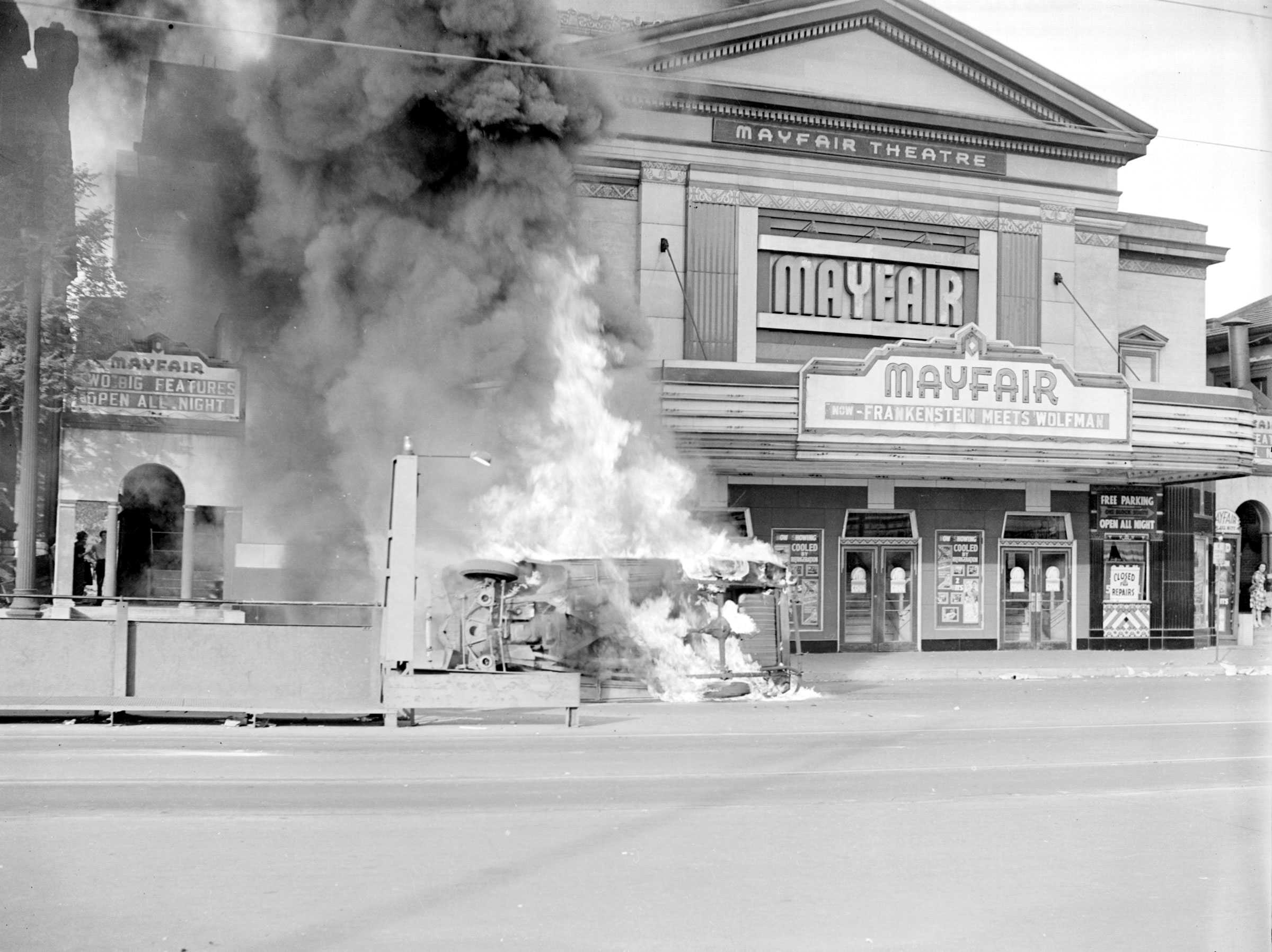Chapter 6
Navigating a Segregated Reality
Segregation did not stop African Americans from building vibrant communities. Black Americans did the same things most Americans did—they visited with friends and family, organized social functions, went to the beach, and attended church. Though segregated, the worlds they built provided a safe haven from insults, mistreatment, and violence.
During the First and Second World Wars, many African Americans developed a new cultural consciousness. After having defended democracy abroad, many returned seeking to defend their rights as American citizens and were committed to change. This new spirit was sometimes referred to as the “New Negro.” Many white Americans resented this change and fought to maintain the racial and social status quo. Mob violence and race massacres against Black communities swept the nation.
Punishing Success
Burned coin recovered from the Tulsa Race Massacre
Lynching and massacres remained a pressing, unsolved problem for African Americans after World War I. Though much of the violence took place in small communities in the South, racial violence also occurred in other parts of the nation. African American economic success and social assertiveness provoked white resentment, which often led to conflict. White vigilantes were rarely punished, adding to African Americans’ sense of vulnerability.
The Tulsa Race Massacre
Fire bombing in Tulsa
The Tulsa Race Massacre of 1921 is one of the worst instances of racial violence in American history. In less than 24 hours, marauding white rioters resentful of African American prosperity destroyed more than 1,000 Black homes and businesses. African American residents, including veterans, fought to protect their neighborhoods but were overwhelmed. In the end, the Black section of Tulsa was completely destroyed, leaving 9,000 people homeless.
Black residents of Tulsa gather to defend themselves during the rioting. The Tulsa police did little to protect African Americans.
The Aftermath of the Tulsa Race Massacre
Afro American newspaper headline about the Tulsa Race Massacre
Black residents salvage belongings
White rioters burned and looted homes, killing African American men, women, and children. Despite the destruction and violence, no white rioters were prosecuted for their participation in the Tulsa Race Massacre. African American newspapers were among the few media outlets that were sympathetic to the plight of Black Tulsa residents.
They apparently could not believe the brutality and fiendishness of men who would deliberately set fire to the homes of their friends and neighbors and just as deliberately shoot them down in their tracks.
Tulsa Daily World, 1921
The Rosewood Massacre
Sophia Monroe’s dress
Fire in Rosewood, Florida
Rosewood was a predominantly Black town in central Florida. In January 1923, a white woman in nearby Sumner claimed she had been assaulted by a Black man. Over the next several days, white mobs attacked and destroyed Rosewood, shooting residents and burning their homes. While the exact number of people killed was never determined, the devastation of the riots was so severe that most residents never returned to Rosewood.
They killed everything in Rosewood. They didn't want anything living in there. They killed everything.
Lee Ruth, resident of Rosewood, 1993
The Detroit Race Riot
A Fire in Detroit
A Citizen of Detroit
On June 20, 1943, fighting broke out at Belle Isle amusement park between Black teenagers and white teenagers and sailors. As the fighting spread, white mobs attacked African Americans in downtown Detroit, including men riding buses to work. African Americans also destroyed white-owned businesses in Black neighborhoods. Local police were unable to gain control, and President Franklin Roosevelt was forced to send federal troops to restore order. Thirty-four people died and $2 million worth of property was destroyed. The troops remained for six months.
African Americans set up the Riot Information Bureau Citizens Committee to help people after the Detroit riot
The Second Rise of the KKK
Ku Klux Klan March, Washington, D.C., 1925
The Ku Klux Klan of the 1920s opposed growing urban populations of immigrants, Catholics, and African Americans. Their appeal was strong enough to elect mayors in Maine and Oregon and gain control of state politics in Colorado and Indiana. At the height of the Klan’s influence in the 1920s, it was estimated to have as many as eight million members.
